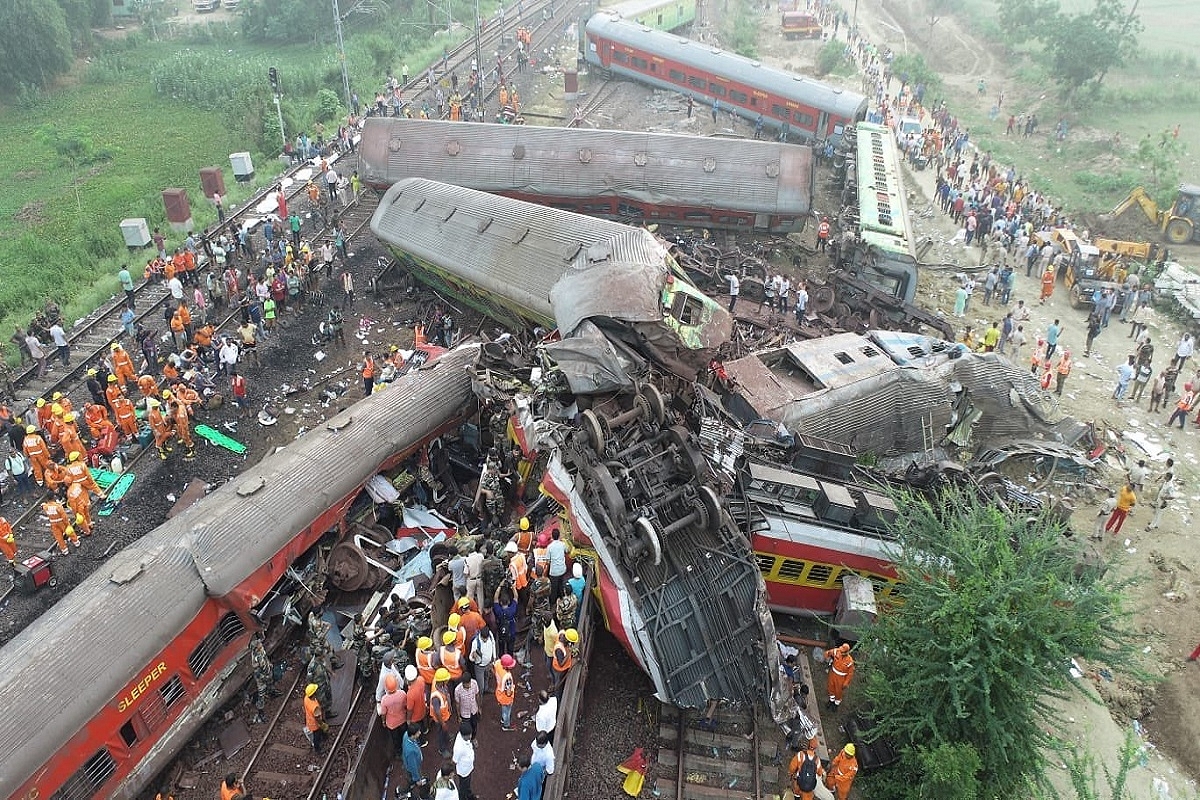Infrastructure
Explained: ‘Electronic Interlocking System’, The Identified Cause For The Odisha Train Tragedy
- A "change" in electronic interlocking, as suggested by the Railway Minister, could have led to incorrect signalling or improper routing that forced the Coromandel Express off the main line.
- Its primary function involves integrating signals, points (switches), and track circuits.

The accident site at Balasore, Odisha.
Railway Minister Ashwini Vaishnaw has said that the accident that claimed the lives of 288 passengers happened due to a 'change in electronic interlocking'.
According to reports, Vaishnaw said that the commissioner of railway safety is probing the horrific accident and will submit a full report.
The Minister added that the root cause of the incident is clear and the people responsible for it have been identified.
“The commissioner of railway safety has investigated the matter and let the investigation report come but we have identified the cause of the incident and the people responsible for it... It happened due to a change in electronic interlocking,” Vaishnaw told ANI.
The Minister also dismissed allegations by West Bengal Chief Minister Mamata Banerjee’s comments about the accident. Banerjee had blamed the absence of anti-collision system which is why the train crashed.
What Is The ‘Electronic Interlocking System’
An interlocking system pertains to a safety mechanism designed to ensure secure and effective functioning of train operations at railway junctions, stations, and signaling locations.
Its primary function involves integrating signals, points (switches), and track circuits.
By doing so, the interlocking system ensures that the movable sections of track, known as points, are appropriately aligned and securely locked in the correct position prior to permitting a train to pass over them.
Track circuits are electrical circuits that are installed on the railway track to detect the presence of a train. Its purpose is to determine whether a particular section of track is occupied or unoccupied, which allows the interlocking system to regulate train movements accordingly.
Moreover, electronic interlocking represents an advanced version of interlocking technology that employs software and electronic components for the control and supervision of train movements.
This system utilises computers, programmable logic controllers (PLCs), and communication networks to efficiently manage and coordinate the signaling, points, and track circuits.
A "change" in the electronic interlocking, as suggested by the Railway Minister, could have led to incorrect signalling or improper routing that forced the Coromandel Express off the main line, as per reports.
Railway Board's Briefing
The latest press briefing by the Railway Board officials stated that both passenger trains were operating in accordance with the 'Green' signal and the permissible speed limit for that particular track, dismissing allegations of exceeding the speed limit.
The Coromandel Express, running at 128 kmph, veered onto the 'up loop line' or side track, resulting in a collision with a stationary freight train, instead of continuing on the main line to cross ahead of the goods train.
"The derailed bogies of Coromandel Express came on the down line, and hit the last two bogies of Yashwantpur Express which was crossing at the speed of 126 kmph from down line," stated Jaya Varma Sinha, Member of Operation and Business Development, Railway Board.
Only Coromondel Express met with an accident, while other two trains bore the impact of collision.
However, the precise cause of the accident can only be determined once the commissioner of railway safety presents a comprehensive technical inquiry report.
Support Swarajya's 50 Ground Reports Project & Sponsor A Story
Every general election Swarajya does a 50 ground reports project.
Aimed only at serious readers and those who appreciate the nuances of political undercurrents, the project provides a sense of India's electoral landscape. As you know, these reports are produced after considerable investment of travel, time and effort on the ground.
This time too we've kicked off the project in style and have covered over 30 constituencies already. If you're someone who appreciates such work and have enjoyed our coverage please consider sponsoring a ground report for just Rs 2999 to Rs 19,999 - it goes a long way in helping us produce more quality reportage.
You can also back this project by becoming a subscriber for as little as Rs 999 - so do click on this links and choose a plan that suits you and back us.
Click below to contribute.
Latest